Measurement of the Shear Properties of Extruded Polystyrene Foam by In-Plane Shear and Asymmetric Four-Point Bending Tests
Abstract
1. Introduction
2. Materials and Methods
2.1. Specimens
2.2. In-Plane Shear (IPS) Tests
2.3. Asymmetric Four-Point Bending (AFPB) Tests
- Since the XPS hardly accepted adhesives, the adhesive strength was not often high.
- Several adhesives often melted the XPS.
2.4. Tension and Compression Tests for the Strain Gauge Calibration
3. Finite Element Analysis
4. Results and Discussion
4.1. Finite Element Analysis
4.2. IPS and AFPB Tests
- The εd–εg relationship corresponding to each specimen was regressed into Equation (6) by the method of least squares.
- The εg values were virtually determined in the range from 0 to 0.005 at intervals of 0.0001, and the εd values were obtained by substituting the εg values into the regressed equation.
- The εd values obtained from the same εg value were averaged among the same XPS material. The averaged εd–εg relationship was regressed into Equation (6) again, and the a, b, and c values were determined.
5. Conclusions
- The results of the FE analyses indicated that the shear modulus values obtained from the AFPB test simulations were closer to the input ones than those obtained from the IPS test simulation. Therefore, it was expected to measure the shear modulus value by the AFPB test accurately.
- In the actual AFPB tests, the measurement of the shear strain using the strain gauge was indirectly determined from the calibration tests. The in-plane shear modulus values obtained from the AFPB tests were close to those obtained from the square plate twist (SPT) tests conducted in a previous study [14]. Therefore, the AFPB test is effective in measuring the shear modulus. To accurately determine the shear strain, however, alternative methods, such as digital image correlation (DIC) and virtual fields method (VFM), should be adopted in place of the strain gauge.
- From the FE analyses, the normal stress components were concentrated in a particular region. Therefore, there was a concern that the shear strength value would be estimated as low because the stress concentration enhanced the failure of the specimen. However, the effect of the stress concentration was less in the AFPB test than in the IPS test.
- Similar to the results obtained from the FE analyses, the experimental results indicated that the shear modulus and shear strength values obtained from the AFPB test were higher than those obtained from the IPS test. Therefore, the effect of the stress concentration was less significant in the AFPB test than in the IPS test.
Author Contributions
Funding
Conflicts of Interest
References
- Vinson, J.R. Sandwich structures. Appl. Mech. Rev. 2001, 54, 201–214. [Google Scholar] [CrossRef]
- Hu, Y.; Nakao, T.; Nakai, T.; Gu, J.; Wang, F. Dynamic properties of three types of wood-based composites. J. Wood Sci. 2005, 51, 7–12. [Google Scholar] [CrossRef]
- Hu, Y.; Nakao, T.; Nakai, T.; Gu, J.; Wang, F. Vibrational properties of wood plastic plywood. J. Wood Sci. 2005, 51, 13–17. [Google Scholar] [CrossRef]
- Kawasaki, T.; Kawai, S. Thermal insulation properties of wood-based sandwich panel for use as structural insulated walls and floors. J. Wood Sci. 2005, 52, 75–83. [Google Scholar] [CrossRef]
- Dow Kakoh and Kuraraykuraflex Jointly Develop Sophisticated Shinzo Thin Tatami Mats. Available online: https://www.dowkakoh.co.jp/styrofoam/product/styrotatami.php?ac=1&fm=product (accessed on 21 November 2018).
- Seto, H.; Saito, I.; Onuki, A.; Takeuchi, M.; Tsuchiya, T. Presumption of the source of indoor air pollution. Amounts of styrene and butanol generation from construction materials. Ann. Rep. Tokyo Metr. Res. Lab. Public Health 2000, 51, 219–222. [Google Scholar]
- Aoyagi, R.; Matsunobu, K.; Matsumura, T. Development of continuous vapor generation for calibration styrene with permeation tube method. Indoor Environ. 2009, 52, 97–102. [Google Scholar] [CrossRef][Green Version]
- Matsumoto, T.; Iwamae, A.; Wakana, S.; Mihara, N. Effect of the Temperature-Humidity Condition in the Room and under the Floor by Heat Insulation Tatami and Flooring; Summaries of Technical Papers of Annual Meeting, Kobe, Japan, 13 September 2014; Architectural Institute of Japan (Environmental Engineering II): Tokyo, Japan, 2014. [Google Scholar]
- Ishida, M.; Sasaki, H.; Horie, K. Compressive Strength of Insulation Materials for Heat-Storage Tank; Summaries of Technical Papers of Annual Meeting, Tokyo, Japan, 23 August 2011; Architectural Institute of Japan (Environmental Engineering II): Tokyo, Japan, 2011. [Google Scholar]
- Ertugrul, O.L.; Trandafir, A.C. Lateral earth pressures on flexible cantilever retaining walls with deformable geofoam inclusions. Eng. Geol. 2013, 158, 23–33. [Google Scholar] [CrossRef]
- Kilar, V.; Koren, D.; Bokan-Bosiljkov, V. Evaluation of the performance of extruded polystyrene boards—Implications for their application in earthquake engineering. Polym. Test. 2014, 40, 234–244. [Google Scholar] [CrossRef]
- Ertugrul, O.L.; Trandafir, A.C.; Ozkan, M.Y. Reduction of dynamic earth loads on flexible cantilever retaining walls by deformable geofoam panels. Soil Dyn. Earthq. Eng. 2017, 92, 462–471. [Google Scholar] [CrossRef]
- Yoshihara, H.; Ataka, N.; Maruta, M. Measurement of the Young’s modulus and shear modulus of extruded polystyrene foam by the longitudinal and flexural vibration methods. J. Cell. Plast. 2018, 54, 199–216. [Google Scholar] [CrossRef]
- Yoshihara, H.; Maruta, M. In-plane shear modulus of extruded polystyrene foam measured by the torsional vibration, square-plate twist and simple shear methods. J. Cell. Plast. 2019, 55, 655–673. [Google Scholar] [CrossRef]
- Kanny, K.; Mahfuz, H.; Thomas, T.; Jeelani, S. Static and dynamic characterization of polymer foams under shear loads. J. Compos. Mater. 2004, 38, 629–639. [Google Scholar] [CrossRef]
- Taher, S.T.; Thomsen, O.T.; Dulieu-Barton, J.M.; Zhang, S. Determination of mechanical properties of PVC foam using a modified Arcan fixture. Composits A 2004, 43, 1698–1708. [Google Scholar] [CrossRef]
- Wang, P.; Pierron, F.; Thomsen, O.T.; Zhang, S. Optimised experimental characterisation of polymeric foam material using DIC and the Virtual Fields Method. Exp. Mech. 2013, 53, 1001–1015. [Google Scholar] [CrossRef]
- Wang, P.; Pierron, F.; Ross, M.; Lava, P.; Thomsen, O.T. Identification of material parameters of PVC Foams using Digital Image Correlation and the Virtual Fields Method. Strain 2016, 52, 59–79. [Google Scholar] [CrossRef]
- ASTM C273/C273M-11. Standard Test Method for Shear Properties of Sandwich Core Materials; ASTM International: West Conshohocken, PA, USA, 2011. [Google Scholar]
- Marsavina, L.; Constantinescu, D.M.; Linul, E.; Voiconi, T.; Apostol, D.A. Shear and mode II fracture of PUR foams. Eng. Fail. Anal. 2015, 58, 465–476. [Google Scholar] [CrossRef]
- Ünal, Ö.; Dayal, V. Interlaminar shear strength measurement of ceramic composites by asymmetric four point bend shear test. Mater. Sci. Eng. A 2003, 340, 170–174. [Google Scholar] [CrossRef]
- Yoshihara, H. Shear properties of wood measured by the asymmetric four-point bending test of notched specimen. Holzforschung 2009, 63, 211–216. [Google Scholar] [CrossRef]
- Theotokoglou, E.E.; Sideridis, E. Study of composite beams in asymmetric four-point bending. J. Reinf. Plast. Compos. 2011, 30, 1125–1137. [Google Scholar] [CrossRef]
- Manalo, A.C. Behaviour of fibre composite sandwich structures under short and asymmetrical beam shear tests. Compos. Struct. 2013, 99, 339–349. [Google Scholar] [CrossRef]
- Yoshihara, H.; Kondo, H. Effect of specimen configuration and lamination construction on the measurement of the in-plane shear modulus of plywood obtained by asymmetric four-point bending test. BioResources 2013, 8, 3858–3868. [Google Scholar] [CrossRef][Green Version]
- Yoshihara, H.; Suzuki, S.; Yoshinobu, M. In-plane shear properties of medium-density fibreboard measured by the asymmetric four-point bending test of notched specimen. Wood Sci. Technol. 2016, 50, 475–487. [Google Scholar] [CrossRef]
- Iosipescu, N. New accurate procedure for single shear testing of metals. J. Mater. 1967, 2, 537–566. [Google Scholar]
- Enomae, T. Application of image correlation technique to determination of in-plane deformation distribution of paper. J. Jpn. Soc. Non Destr. Insp. 2007, 56, 561–566. [Google Scholar]
- Yoshihara, Y.; Yoshinobu, M. Effects of specimen configuration and measurement method of strain on the characterization of tensile properties of paper. J. Wood Sci. 2014, 60, 287–293. [Google Scholar] [CrossRef]
- Kohno, S.; Sunaga, F.; Momoi, T.; Horiuchi, A. Strain measurements in EPS-model subgrade. In Proceedings of the 50th JSCE Annual Meeting, Tokyo, Japan, 19 September 1995; Japan Society of Civil Engineers: Tokyo, Japan, 1995. [Google Scholar]
- Tsutsumi, K.; Kurosawa, E.; Takagawa, Y.; Konishi, T. Predicting shapes of castings manufactured by evaporative-pattern casting process. R&D Kobe Steel Eng. Rep. 2014, 64, 44–48. [Google Scholar] [CrossRef][Green Version]
- Yoshihara, H.; Maruta, M. Mode I J-integral of extruded polystyrene measured by the four-point single-edge notched bending test. Eng. Fract. Mech. 2019, 222, 106716. [Google Scholar] [CrossRef]
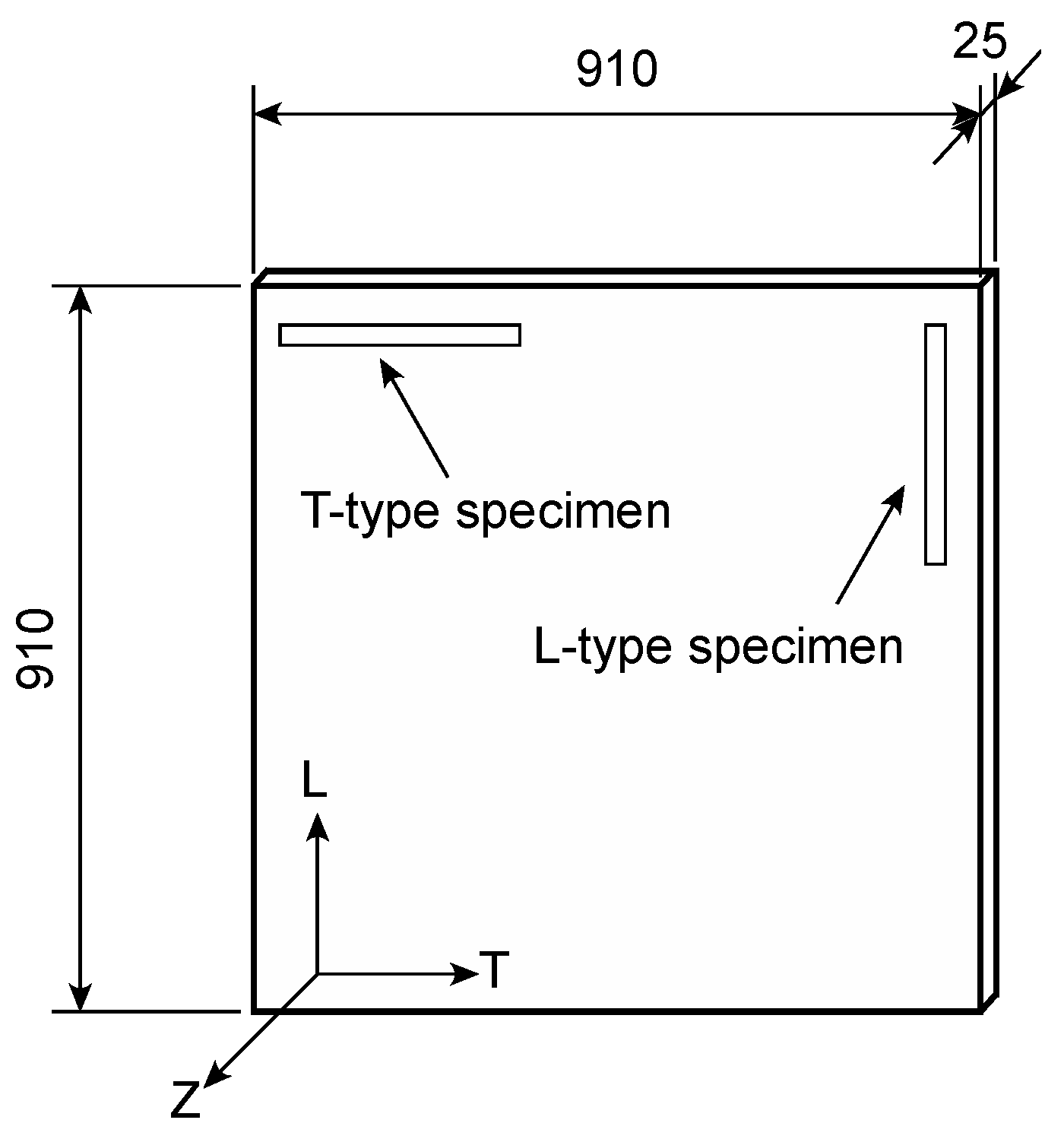
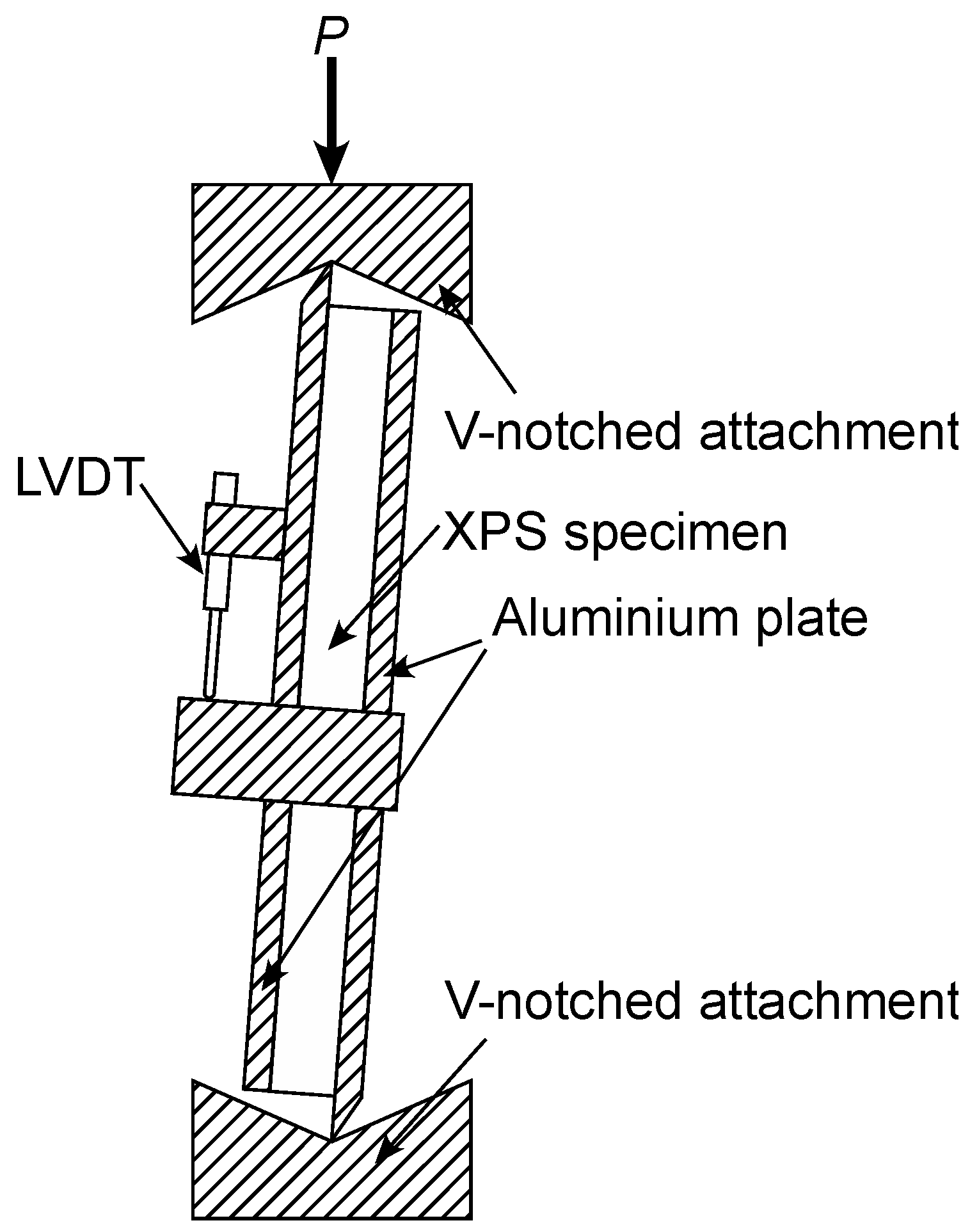
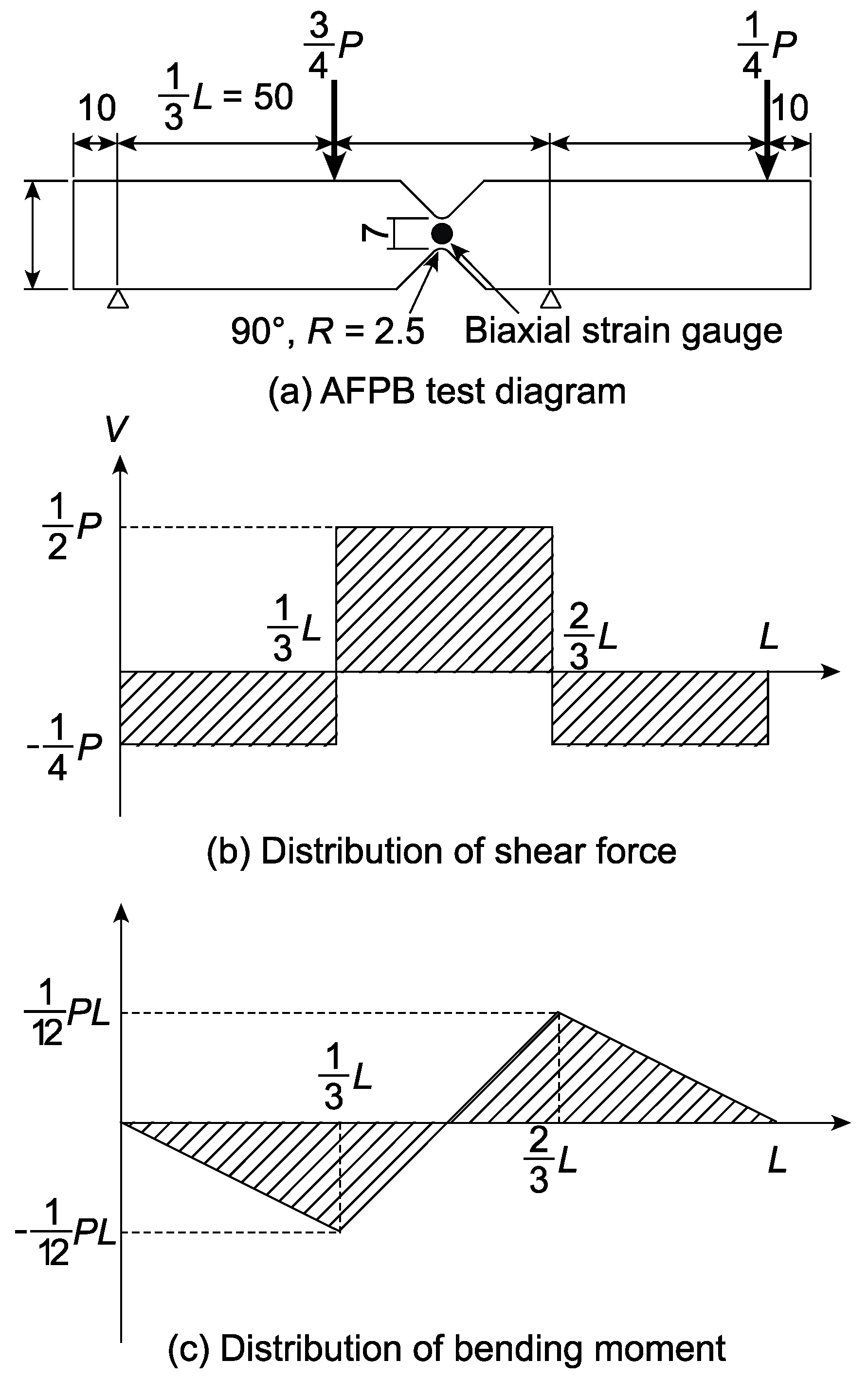
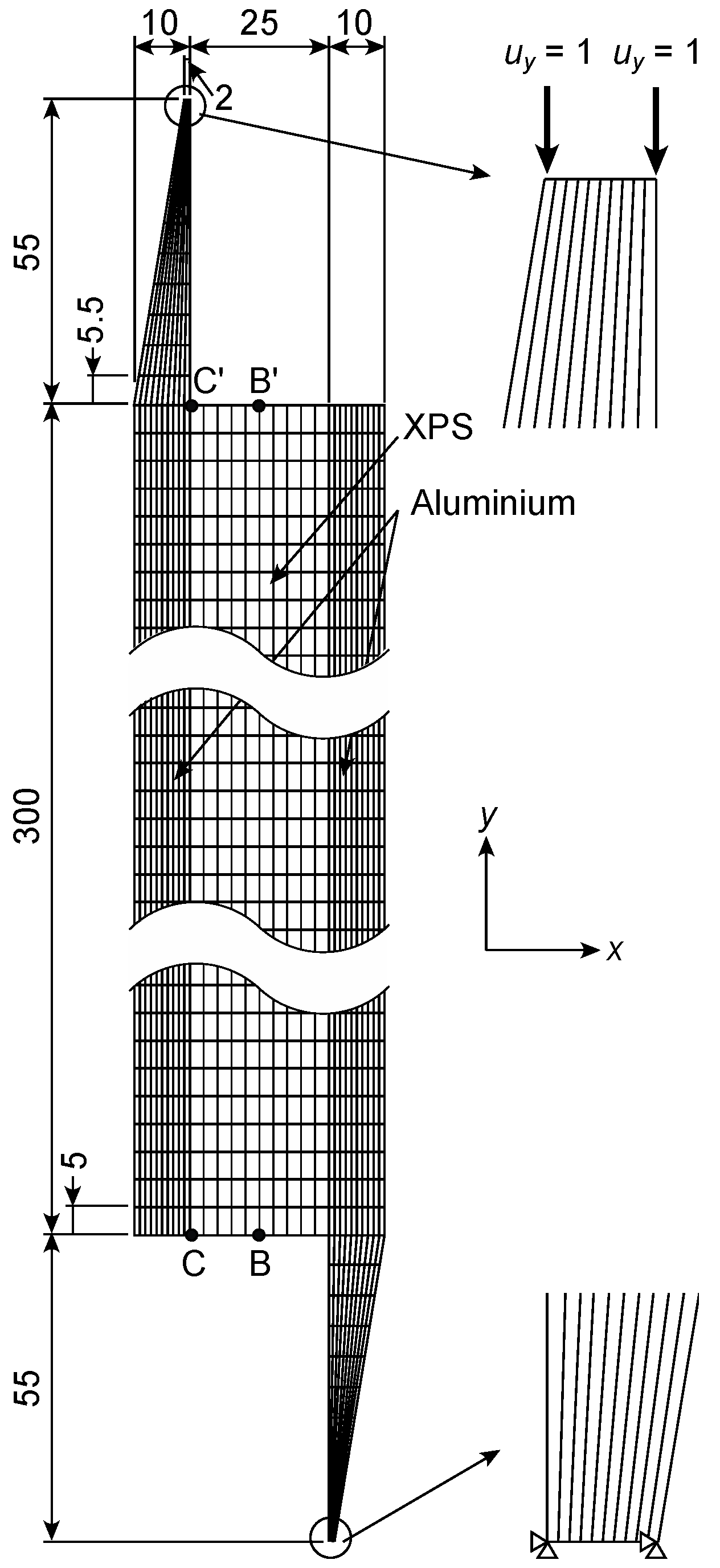
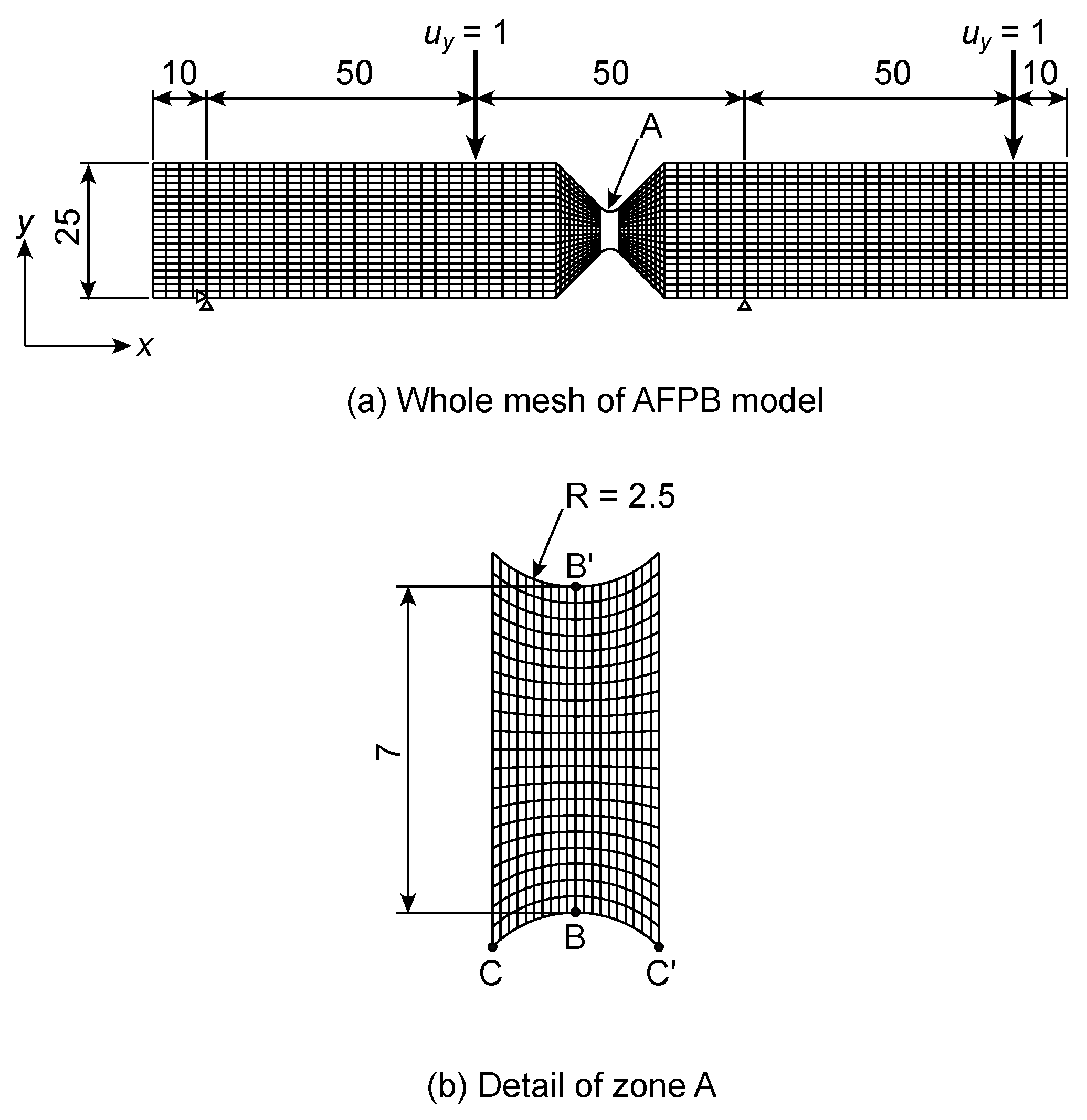
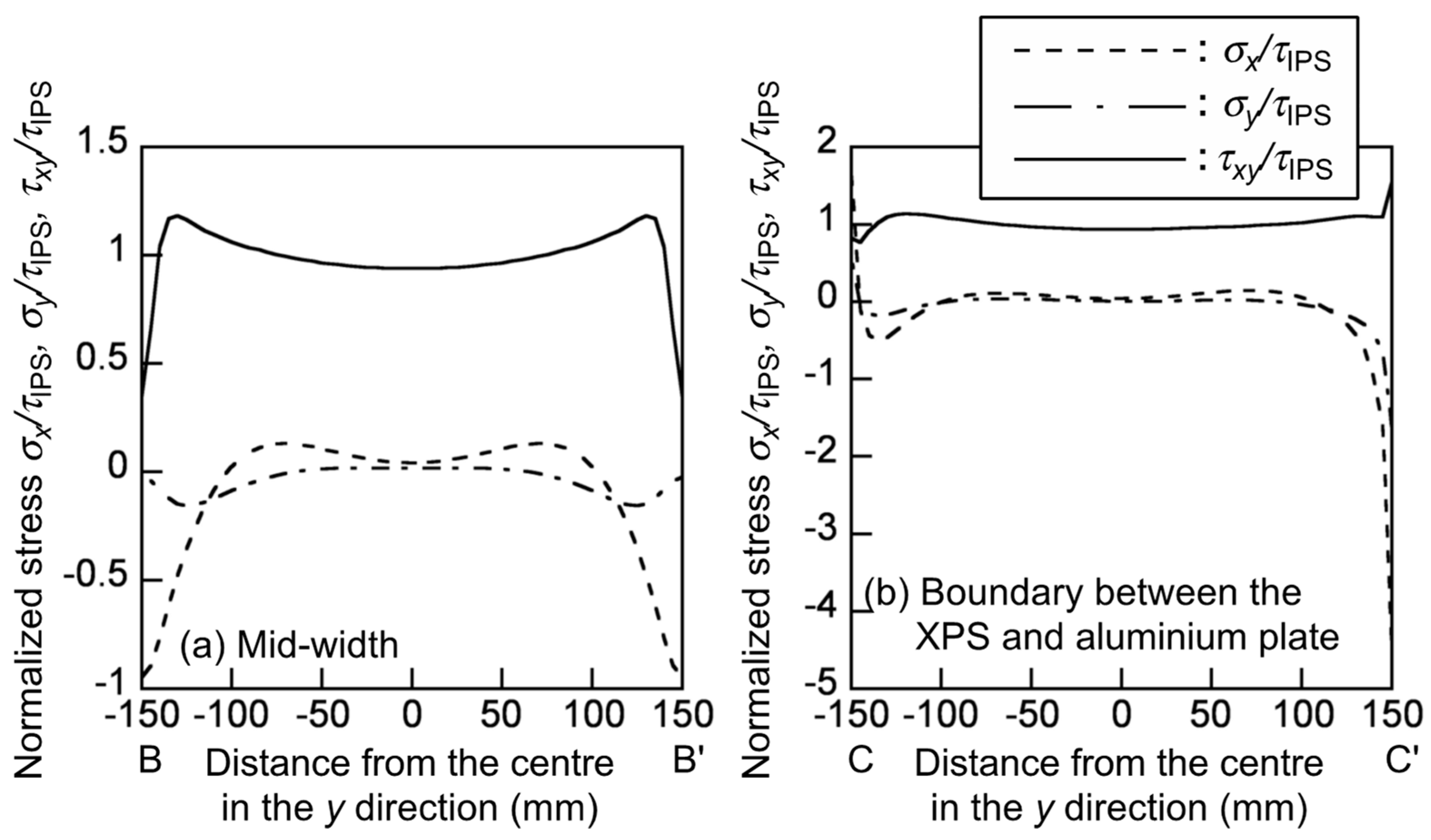
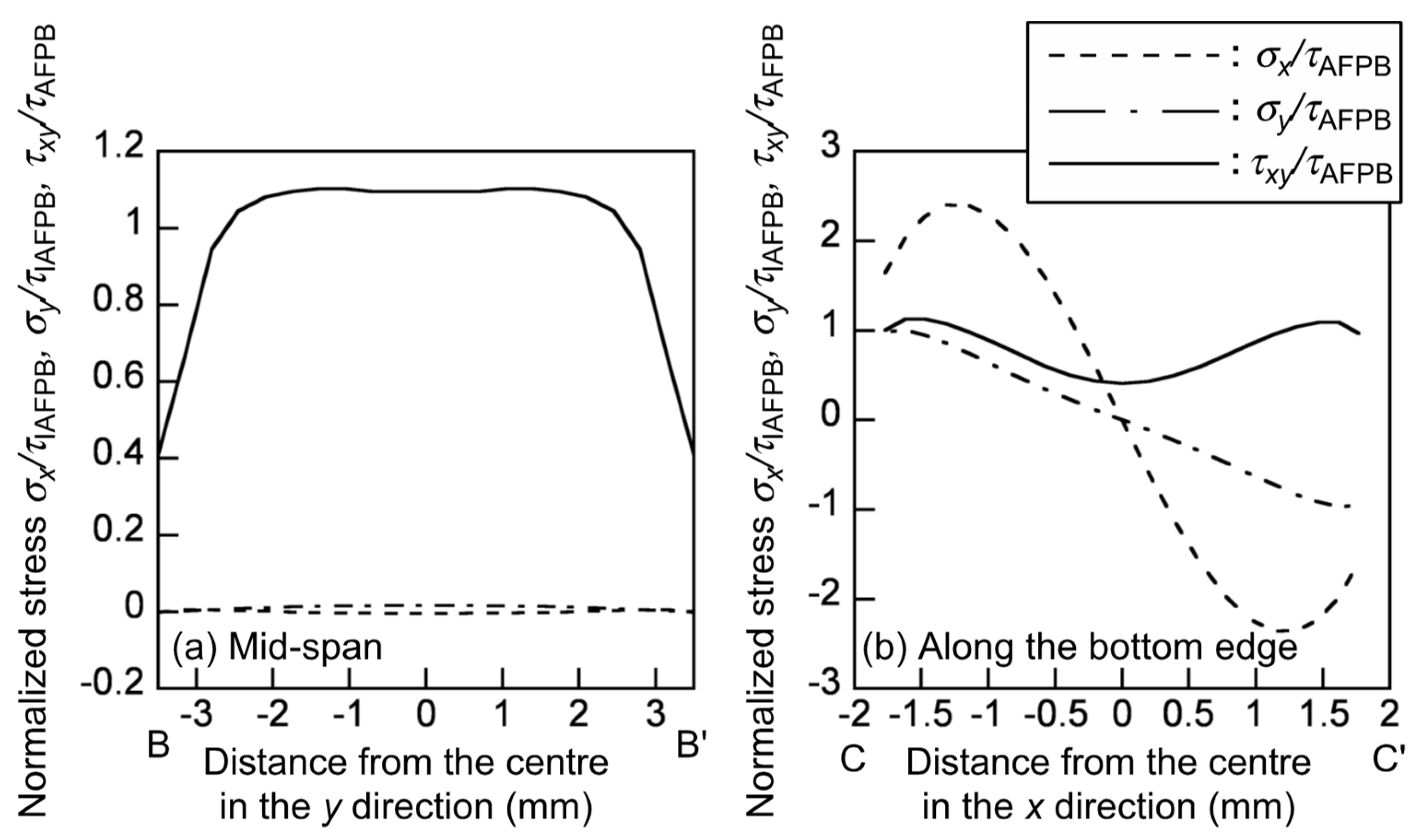
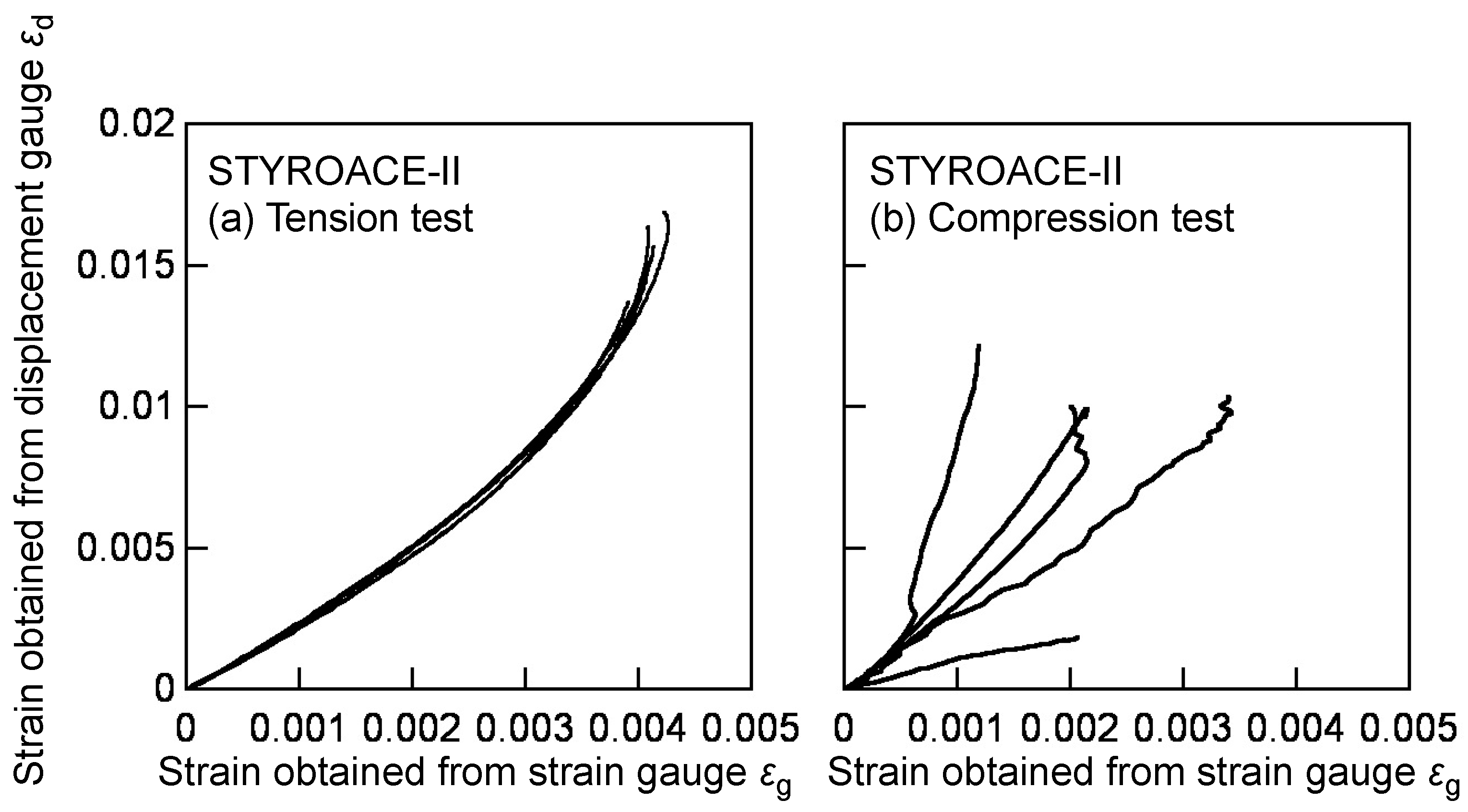
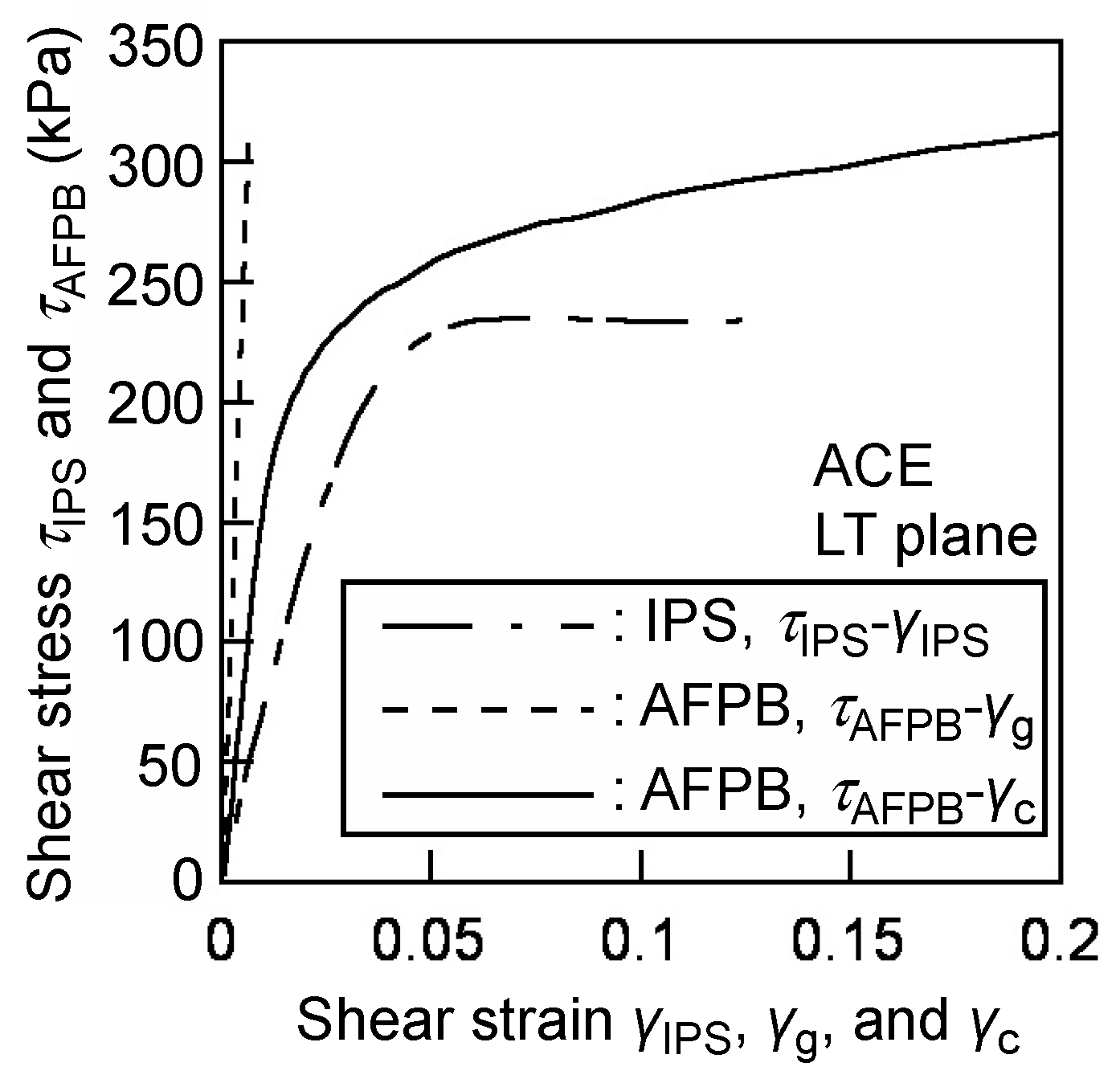

| Material | Code | Density (kg/m3) |
|---|---|---|
| STYROFOAM IB | IB | 26 |
| STYROFOAM B2 | B2 | 29 |
| STYROACE-II | ACE | 32 |
| STYROFOAM RB-GK-II | RB-GK | 36 |
| Code | Young’s Modulus (MPa) | Shear Modulus (MPa) | Poisson’s Ratio | ||||||
|---|---|---|---|---|---|---|---|---|---|
| EL | ET | EZ | GLT | GZL | GTZ | vLT | vZL | vTZ | |
| IB | 17.7 | 15.7 | 16.7 | 6.93 | 9.42 | 8.95 | 0.46 | 0.53 | 0.40 |
| B2 | 24.4 | 15.9 | 20.2 | 7.26 | 10.3 | 8.55 | 0.58 | 0.44 | 0.46 |
| ACE | 29.0 | 19.8 | 24.4 | 9.18 | 12.8 | 10.5 | 0.53 | 0.40 | 0.37 |
| RB-GK | 37.5 | 23.5 | 30.5 | 12.1 | 15.5 | 13.5 | 0.43 | 0.36 | 0.51 |
| Young’s Modulus (GPa) | Shear Modulus (GPa) | Poisson’s Ratio | |||||||
| Aluminium | 69.0 | 27.0 | 0.28 | ||||||
| Code | GLT (MPa) | GLZ (MPa) | GTL (MPa) | GTZ (MPa) | ||||
|---|---|---|---|---|---|---|---|---|
| IPS | AFPB | IPS | AFPB | IPS | AFPB | IPS | AFPB | |
| IB | 5.54 | 6.16 | 7.08 | 8.30 | 5.58 | 6.05 | 6.80 | 7.77 |
| B2 | 5.75 | 6.62 | 7.65 | 10.6 | 5.87 | 6.21 | 6.63 | 7.60 |
| ACE | 7.00 | 9.18 | 9.08 | 13.2 | 7.13 | 7.87 | 7.84 | 8.95 |
| RB-GK | 8.69 | 11.1 | 10.5 | 15.5 | 8.91 | 10.3 | 10.4 | 11.5 |
| Code | α | β | c |
|---|---|---|---|
| IB | 3.97 | 135 | 5.25 |
| B2 | 5.20 | 216 | 12.6 |
| ACE | 2.83 | 131 | 8.60 |
| RB-GK | 2.18 | 130 | 8.95 |
| Code | GLT (MPa) | GLZ (MPa) | GTL (MPa) | GTZ (MPa) | GLT, GTL (MPa) | ||||
|---|---|---|---|---|---|---|---|---|---|
| IPS | AFPB | IPS | AFPB | IPS | AFPB | IPS | AFPB | SPT | |
| IB | 4.47 | 8.00 | 7.04 | 9.60 | 4.64 | 7.36 | 6.06 | 7.47 | 6.32 |
| (0.16) | (2.70) | (0.47) | (1.62) | (0.24) | (1.68) | (0.63) | (1.72) | (0.22) | |
| B2 | 4.96 | 7.34 | 7.53 | 6.76 | 5.25 | 6.56 | 6.43 | 6.42 | 6.99 |
| (0.60) | (1.05) | (0.63) | (0.68) | (0.71) | (0.59) | (0.37) | (0.57) | (0.09) | |
| ACE | 6.55 | 10.4 | 11.1 | 16.3 | 6.93 | 11.3 | 8.03 | 10.6 | 9.78 |
| (0.60) | (2.3) | (0.2) | (1.3) | (0.33) | (2.5) | (0.44) | (1.4) | (0.36) | |
| RB-GK | 10.3 | 15.0 | 12.7 | 16.6 | 10.4 | 11.9 | 8.96 | 13.7 | 13.6 |
| (0.8) | (2.8) | (0.6) | (3.1) | (0.6) | (2.5) | (1.05) | (3.0) | (0.5) | |
| Code | SLT (kPa) | SLZ (kPa) | STL (kPa) | STZ (kPa) | ||||
|---|---|---|---|---|---|---|---|---|
| IPS | AFPB | IPS | AFPB | IPS | AFPB | IPS | AFPB | |
| IB | 157 | 225 | 208 | 261 | 157 | 213 | 185 | 242 |
| (7) | (2) | (13) | (13) | (12) | (7) | (33) | (14) | |
| B2 | 150 | 267 | 235 | 298 | 163 | 245 | 196 | 250 |
| (14) | (9) | (16) | (30) | (7) | (12) | (16) | (19) | |
| ACE | 212 | 363 | 289 | 344 | 228 | 271 | 231 | 260 |
| (19) | (45) | (9) | (9) | (11) | (12) | (5) | (27) | |
| RB-GK | 282 | 403 | 351 | 429 | 283 | 355 | 278 | 320 |
| (36) | (18) | (18) | (40) | (33) | (16) | (31) | (26) | |
© 2019 by the authors. Licensee MDPI, Basel, Switzerland. This article is an open access article distributed under the terms and conditions of the Creative Commons Attribution (CC BY) license (http://creativecommons.org/licenses/by/4.0/).
Share and Cite
Yoshihara, H.; Maruta, M. Measurement of the Shear Properties of Extruded Polystyrene Foam by In-Plane Shear and Asymmetric Four-Point Bending Tests. Polymers 2020, 12, 47. https://doi.org/10.3390/polym12010047
Yoshihara H, Maruta M. Measurement of the Shear Properties of Extruded Polystyrene Foam by In-Plane Shear and Asymmetric Four-Point Bending Tests. Polymers. 2020; 12(1):47. https://doi.org/10.3390/polym12010047
Chicago/Turabian StyleYoshihara, Hiroshi, and Makoto Maruta. 2020. "Measurement of the Shear Properties of Extruded Polystyrene Foam by In-Plane Shear and Asymmetric Four-Point Bending Tests" Polymers 12, no. 1: 47. https://doi.org/10.3390/polym12010047
APA StyleYoshihara, H., & Maruta, M. (2020). Measurement of the Shear Properties of Extruded Polystyrene Foam by In-Plane Shear and Asymmetric Four-Point Bending Tests. Polymers, 12(1), 47. https://doi.org/10.3390/polym12010047






